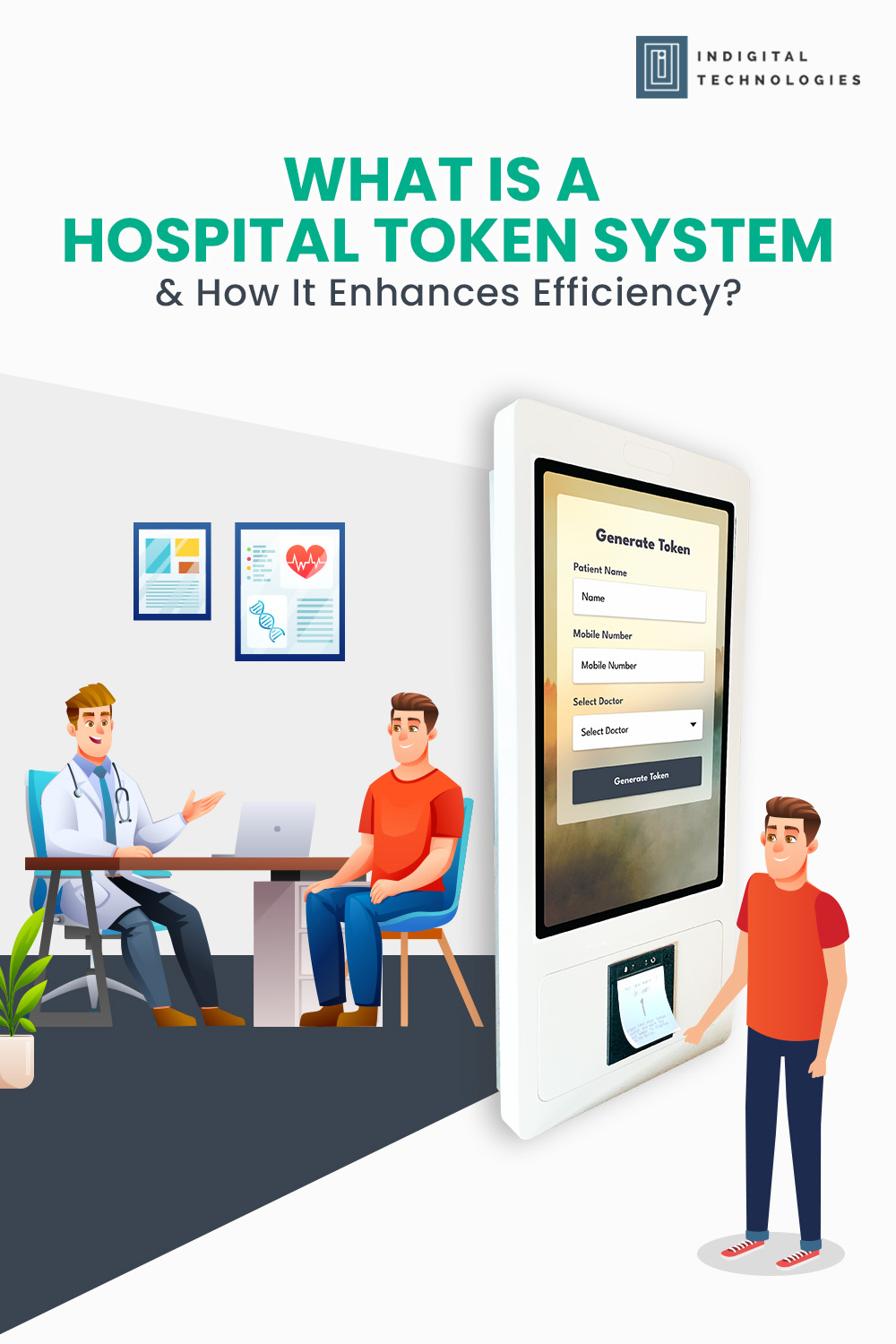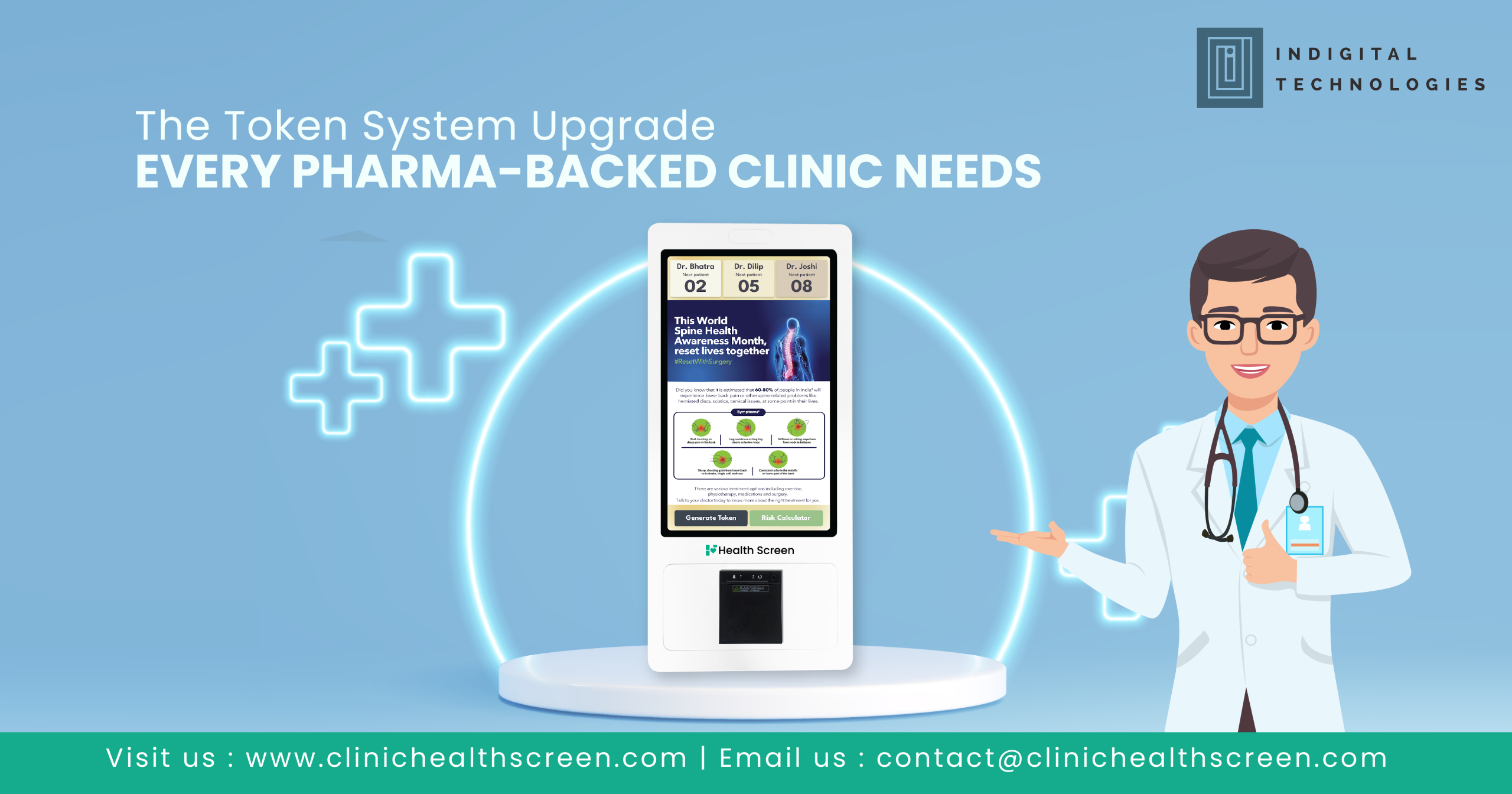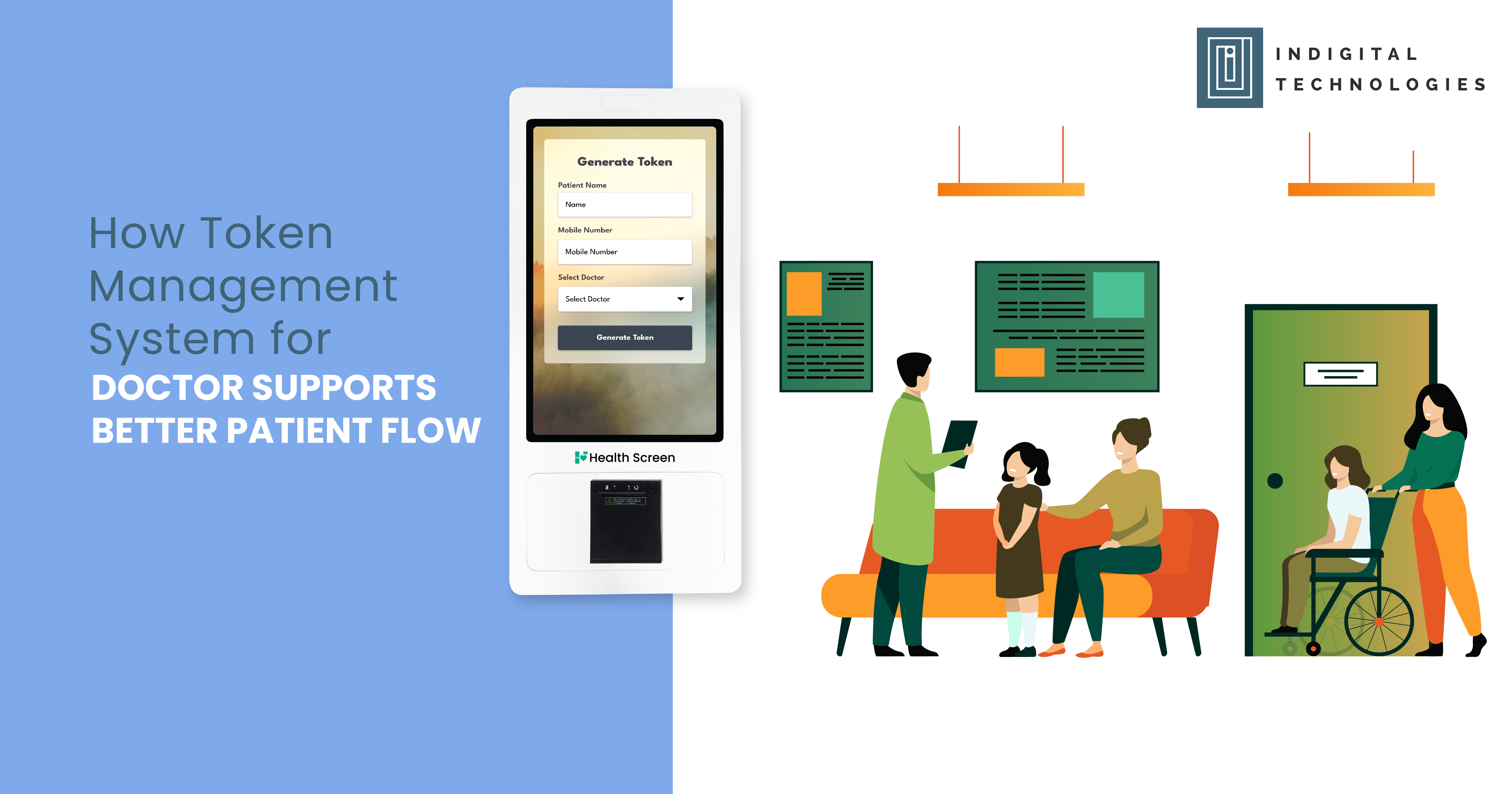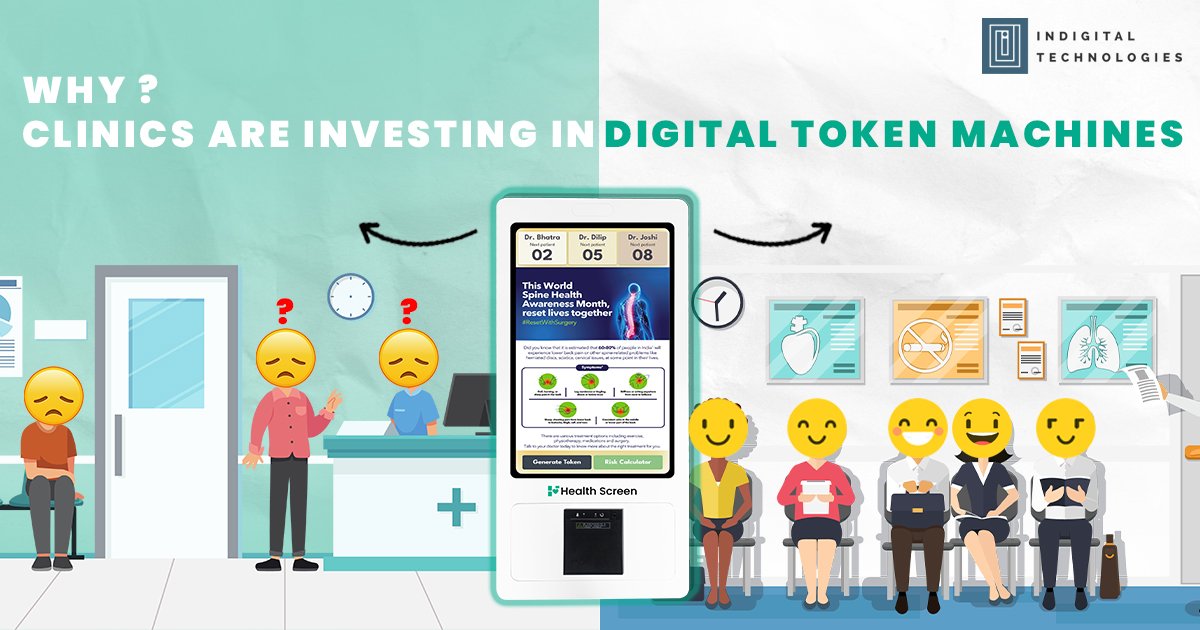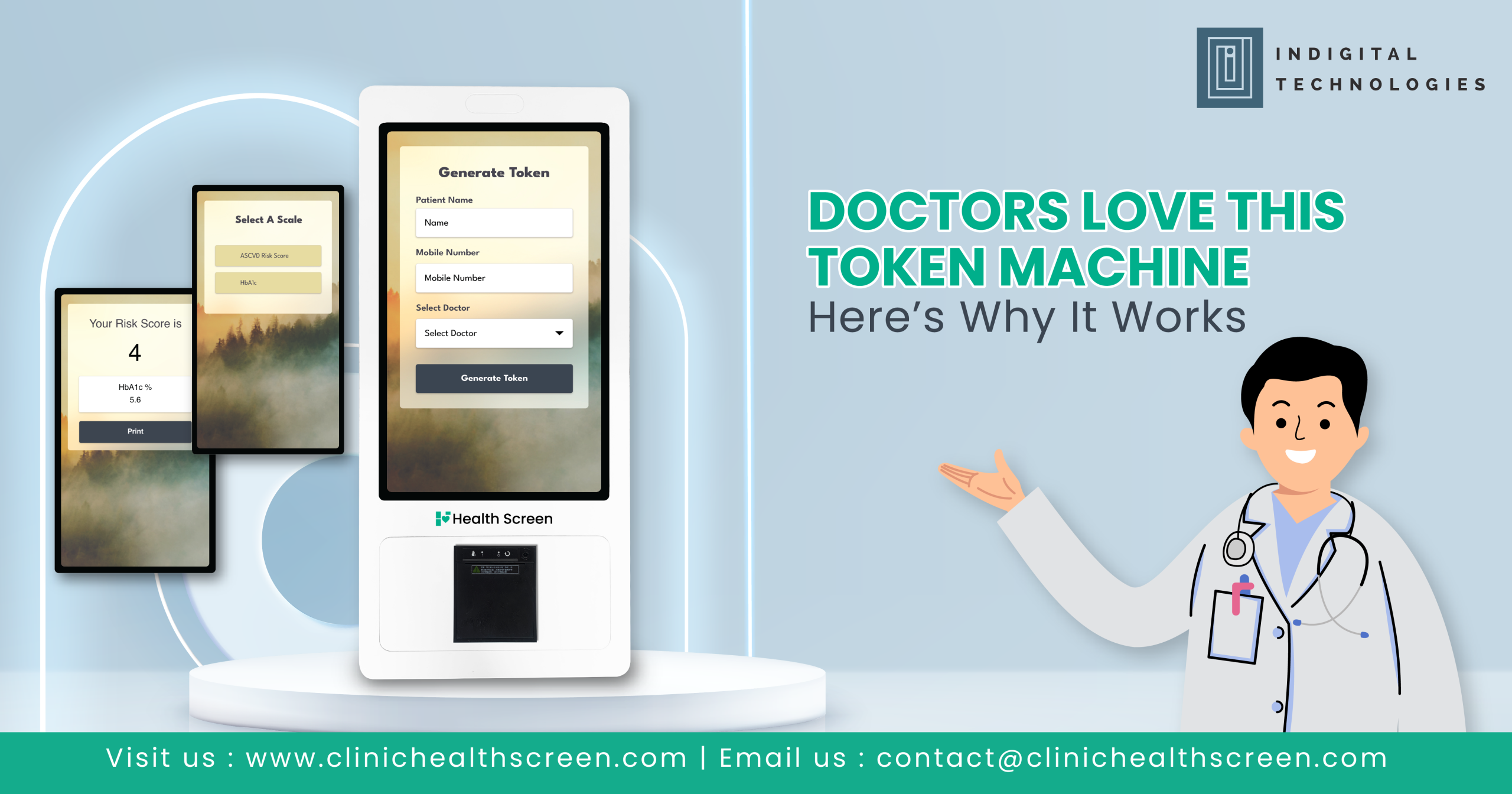Efficiency in hospital operations is no longer a back-office concern — it’s a frontline priority. In high-footfall hospitals, especially in India’s urban and semi-urban areas, overcrowded waiting rooms, chaotic queues, and unpredictable patient movement are still common issues. These inefficiencies not only delay patient care but also contribute to staff burnout and poor patient satisfaction.
One of the most effective tools to solve this is the Hospital Token System — a digital queuing and patient flow management solution. It organizes patient movement from entry to consultation, testing, pharmacy, or discharge in a structured, automated way. This blog will explore what a hospital token system is, how it works, and the many ways it drives operational efficiency across departments.
What Is a Hospital Token System?
A hospital token system is a digital queue management platform that assigns a unique token number to each patient upon arrival. The system then guides the patient through their journey within the hospital, calling them forward for consultation, diagnostics, or pharmacy services in a logical and optimized order.
Unlike manual queues or paper slips, token systems:
- Eliminate confusion over “who’s next”
- Provide real-time visibility to both patients and staff
- Reduce unnecessary congestion
- Improve turn-around time (TAT) for consultations and services
The system typically consists of:
- Check-in interface (kiosk, reception desk, mobile)
- Token number generator
- Digital displays in waiting areas
- Doctor and staff dashboards
- SMS/mobile alerts
- Analytics and reporting tools
Why Are Token Systems Crucial in Hospitals?
Hospitals face a unique challenge: high patient volume combined with multiple service points — OPD, diagnostics, pharmacy, billing, emergency, etc. Managing this complex flow manually leads to:
- Long wait times
- Staff inefficiency
- Poor patient satisfaction
- Delay in emergency triage
- Lost revenue from patients walking out
A token system streamlines these processes, improving service delivery, staff coordination, and throughput across the hospital.
How a Token System Enhances Hospital Efficiency
1. Organized Patient Movement
From the moment a patient checks in, the token system directs them in a logical sequence:
- Reception/registration
- Waiting area
- Consultation
- Lab or imaging
- Pharmacy or billing
Each step is timed and monitored, minimizing unnecessary waiting or repeated inquiries.
2. Reduced Wait Time and Overcrowding
Digital displays and SMS alerts inform patients about their token status in real time. Patients don’t need to crowd near the doctor’s chamber or keep checking with the front desk.
This results in:
- Better air circulation and comfort in waiting areas
- Reduced infection transmission risk
- Improved patient experience, especially for children, elderly, and immune-compromised patients
3. Improved Doctor Time Management
Doctors can see the token queue on their screens and:
- Anticipate the next case
- Prioritize patients (e.g., follow-ups vs. new patients)
- Reschedule or skip non-urgent cases if required
- View consultation duration data for optimization
This control allows for smoother consultation pacing and prevents burnout during high-load hours.
4. Seamless Multi-Department Coordination
Hospital token systems are not just for the OPD. Advanced systems link:
- Consultation rooms
- Diagnostic labs
- Imaging centers
- Pharmacy counters
- Billing desks
A single token number can follow the patient through these steps, improving service continuity and reducing repeated data entry or confusion.
5. Multi-Doctor and Multi-Specialty Efficiency
In large hospitals with multiple doctors or specialties, token systems help by:
- Running separate queues for each doctor
- Allowing cross-referral coordination
- Helping staff redirect patients to available doctors
- Identifying idle slots and optimizing schedules
This balances load across departments and avoids bottlenecks during peak hours.
6. Enhanced Patient Communication
Patients receive timely information via:
- Waiting room displays
- Audio announcements
- SMS alerts
- Mobile app notifications
This reduces front-desk inquiries, frees up staff, and keeps patients well-informed throughout their hospital journey.
7. Data-Driven Insights
Token systems generate valuable operational data:
- Average consultation time per doctor
- Peak hours and footfall trends
- Wait time vs. service time analysis
- Department-wise patient flow
- No-show rates and drop-off points
These analytics empower hospital administrators to:
- Improve shift planning
- Allocate resources dynamically
- Identify and resolve bottlenecks
- Implement real-time corrective actions
8. Improved Patient Satisfaction and Retention
Efficient patient flow directly impacts how patients perceive the quality of care. When patients are not made to wait indefinitely and receive clear communication, they’re more likely to:
- Recommend the hospital
- Return for follow-ups
- Leave positive feedback
The hospital’s brand perception is also enhanced through smoother service delivery.
9. Support for Emergency Prioritization
Some token systems offer triage tagging features — where staff can assign high-priority status to patients with critical conditions. These patients are moved ahead in the queue automatically, ensuring timely care without disrupting general patient flow.
10. Minimal Manual Intervention
Token systems reduce the dependency on manual queue management and receptionist coordination. Staff are free to:
- Attend to patient needs
- Answer queries
- Prepare documentation
- Support medical personnel
With automation handling the flow, the human element can focus on adding value, not managing chaos.
Additional Benefits for Pharma Managers and Sponsors
Token systems can double up as communication tools. Many hospitals use the screen time to:
- Educate patients on disease prevention
- Promote vaccination campaigns
- Share pharma-branded awareness content
This aligns patient education with responsible brand visibility — offering a win-win opportunity for both hospitals and pharma sponsors.
Features to Look For in a Hospital Token System
| Feature | Why It’s Important |
| Multi-department integration | Supports OPD, diagnostics, pharmacy, billing |
| Multi-location support | Ideal for hospital chains or groups |
| Doctor dashboard access | Enables real-time control and scheduling |
| Regional language compatibility | Improves accessibility across India |
| Data analytics and reporting | Enables informed decision-making |
| Patient alerts (SMS/App) | Keeps communication clear and consistent |
| Offline functionality | Useful during power/internet disruptions |
| Feedback collection | Tracks patient satisfaction in real-time |
Final Thoughts
In modern hospitals, managing patient flow effectively is not just a matter of convenience — it’s a key component of quality care and operational sustainability. A hospital token system provides the structure, transparency, and control necessary to handle today’s dynamic outpatient demands.
By automating queues, synchronizing departments, and enhancing communication, token systems transform daily hospital chaos into a streamlined process that benefits every stakeholder — patients, doctors, staff, and healthcare brands alike.
As hospitals gear up for digital transformation, token systems offer a practical, affordable, and impactful first step toward a more efficient future.

